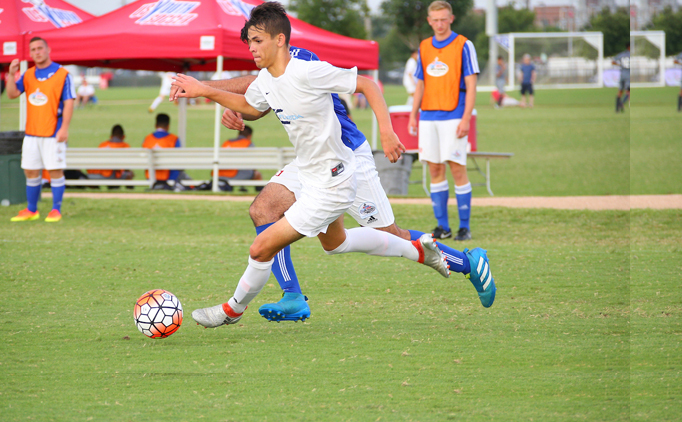US Youth Soccer Relabel Age Groups & Heading Restriction Recommendations
US Youth Soccer at work — with more than 3 million youth soccer players actively playing the beautiful game all across America, this organization is responsible for rolling out the U.S. Soccer new player development initiatives and birth year registration mandates to nearly 200,000 youth soccer teams. Here are US Youth Soccer guidelines for navigating the changes — which have left many parents, players and even coaches confused.
It is more than the shuffling of players into new teams and the relabeling of age group terminology — this fall season also introduces the new guidelines for heading restrictions.
Youth Soccer News: The 2016-17 youth soccer season will be a transitional year as leagues, clubs and teams begin to implement the U.S. Soccer mandates.
Why did U.S. Soccer issue these changes?
The bottom line is that U.S. Soccer wants to improve the quality of youth soccer in America and believes that the current landscape is fraught with inconsistencies. With the goal of improving player development, these initiatives aim to help make the game more enjoyable for all while providing greater opportunities for the better players to advance. America is a big country and it does make sense to have a consistent approach across the country.
U.S. Soccer mandated the changes be in effect by August of 2017 and many organizations have taken advantage of instituting “Best Practices” early. The mandates effect all youth soccer players in US Youth Soccer, US Club Soccer, AYSO, SA and other organizations.
US Youth Soccer will outline the relabeling of age group terminology and offer recommendations for implementing the heading restrictions.

US Youth Soccer is in the process of relabeling age groups — moving the word “under” to the opposite side of the numeral to reflect the new player registration by birth year.
With more than 3 million kids playing all across the country, it is important everyone gets on the same page and starts becoming conferrable with the same terminology. Confused? Don;t feel bad — at sone point, everyone was.
For example, the Under-10 age group becomes 10-and-Under to clarify that players in the age group can be 10 years old and younger. With this change, the shorthand for labeling age groups will change from U-10 to 10-U.
These changes impact youth soccer players playing all across the country in US Youth Soccer four (4) regions.
Total of youth soccer players by US Youth Soccer Regions
- Region I Total – 1,012,155
- Region II Total – 626,520
- Region III Total – 708,835
- Region IV Total – 707,638
For those clubs or leagues adopting player registration by year of birth for the 2016-17 soccer year, here is a chart that shows the birth year for that season.
Please note that when determining the age group for a season, the year the competition ends should be used. For example, a player born in 2007 would be in the 10-and-Under age group for the 2016-17 soccer year (2017 – 2007 = 10.)
 Please note that the following US Youth Soccer competitions are introducing birth-year registration in the 2016-17 season:
Please note that the following US Youth Soccer competitions are introducing birth-year registration in the 2016-17 season:
- US Youth Soccer National Championships Series — including national, regional and state competitions
- US Youth Soccer Presidents Cup — including national, regional and state competitions
- US Youth Soccer National League
- US Youth Soccer Regional Leagues
- US Youth Soccer Olympic Development Program
Heading Restriction Implementation Recommendations
The 11-U play group, formerly referred to as U-11, is the group most affected by players age 10 and younger because players turn 11 years old over the range of a year. Therefore, deliberate heading is not allowed in 11-U games.
If a 10-year-old or younger player is playing in an age group older than 11-U (ex: 10-year-old playing with a 12-U team), then that 10-year-old or younger player may not head the ball regardless of the age group in which the he or she participates.
 Special note: the overriding principle is that a player age 10 or younger may not head the ball no matter which age group the player plays. This requires education and support from the coach and parent to instruct the player accordingly.
Special note: the overriding principle is that a player age 10 or younger may not head the ball no matter which age group the player plays. This requires education and support from the coach and parent to instruct the player accordingly.
US Youth Soccer suggests that any league that combines 11-U and 12-U for competition should strongly consider not allowing heading in any game in that combined group’s play.






